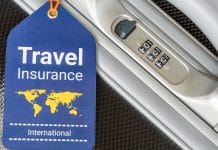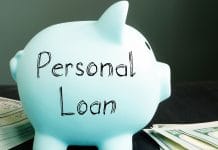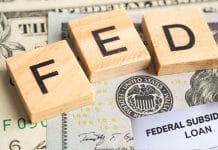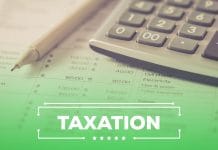Drowning in debt? You’re not alone. Nearly 40% of Americans carry credit card debt from month to month, and the average household owes over $6,000 in credit card balances alone. If you’re juggling multiple payments, losing sleep over mounting interest charges, or considering drastic measures, it’s time to explore your options.
The good news? There are legitimate debt relief programs designed to help people just like you regain control of their finances. But with so many options out there—and unfortunately, plenty of scams—how do you know which path is right for your situation?
Let’s cut through the noise and examine the top 5 debt relief programs that could be your ticket to financial freedom.
What Are Debt Relief Programs?
Before diving into specific programs, let’s establish what debt relief actually means. Debt relief encompasses various strategies and programs designed to help borrowers manage, reduce, or eliminate their debt burden. These programs range from informal payment plans to formal legal proceedings.
The key is finding a program that matches your financial situation, credit score, and long-term goals. Not every program works for every person—and that’s exactly why we’re breaking down your top options.
The Top 5 Debt Relief Programs You Should Know
1. Debt Management Plans (DMPs)
What it is: A debt management plan is like having a financial mediator in your corner. Credit counseling agencies work directly with your creditors to negotiate lower interest rates and create a single monthly payment plan.
How it works:
- You make one monthly payment to the credit counseling agency
- They distribute payments to your creditors
- Interest rates are often reduced or eliminated
- Late fees and over-limit charges are typically waived
Best for: People with steady income who can commit to 3-5 years of consistent payments. Your credit score doesn’t need to be perfect—this program is designed for people already struggling.
Timeline: 3-5 years typically
Credit impact: Minimal negative impact initially, but can improve your score over time as you pay down balances
2. Debt Consolidation Loans
What it is: This involves taking out a single loan to pay off multiple debts. Instead of juggling various credit card payments with different interest rates and due dates, you’ll have one loan with one monthly payment.
How it works:
- Apply for a personal loan large enough to cover your existing debts
- Use the loan proceeds to pay off credit cards and other debts
- Make monthly payments on the consolidation loan only
Best for: People with decent credit scores (usually 620+) who qualify for lower interest rates than they’re currently paying. This works especially well if you have multiple credit card debts with high interest rates.
Timeline: 2-7 years depending on loan terms
Credit impact: Can improve your credit score by lowering credit utilization and simplifying payments
3. Debt Settlement Programs
What it is: Professional negotiators work with your creditors to settle your debts for less than you actually owe. You’ll typically stop making payments to creditors and instead pay into a settlement fund.
How it works:
- You stop paying creditors directly
- Money goes into a settlement fund
- Settlement company negotiates with creditors
- Debts are settled for a percentage of what you owe (often 40-60%)
Best for: People facing severe financial hardship who are already behind on payments or considering bankruptcy. This is typically a last resort before bankruptcy.
Timeline: 2-4 years
Credit impact: Significant negative impact initially, but may be better than bankruptcy long-term
4. Bankruptcy Protection
What it is: A legal process that provides a fresh start for people overwhelmed by debt. There are two main types for individuals: Chapter 7 (liquidation) and Chapter 13 (reorganization).
Chapter 7: Most assets are sold to pay creditors, remaining qualifying debts are discharged Chapter 13: You keep your assets but follow a 3-5 year repayment plan
Best for: People with no realistic way to repay their debts, even with other relief programs. This should be considered only after exhausting other options.
Timeline: Chapter 7 takes a few months; Chapter 13 takes 3-5 years
Credit impact: Severe initial impact, but allows for a fresh start
5. Federal Student Loan Forgiveness Programs
What it is: Various government programs designed to forgive, discharge, or provide favorable repayment terms for federal student loans.
Main programs include:
- Public Service Loan Forgiveness (PSLF)
- Income-driven repayment plans
- Teacher Loan Forgiveness
- Total and Permanent Disability Discharge
How it works: Varies by program, but generally involves meeting specific employment, payment, or circumstance requirements
Best for: Federal student loan borrowers working in qualifying public service jobs or facing financial hardship
Timeline: Varies (PSLF requires 10 years of qualifying payments)
Credit impact: Generally positive or neutral
Comparison Table: Which Program Is Right for You?
| Program | Credit Score Needed | Timeline | Credit Impact | Best For |
| Debt Management Plan | Any | 3-5 years | Minimal/Improving | Steady income, multiple debts |
| Debt Consolidation | 620+ | 2-7 years | Neutral/Improving | Good credit, high-interest debts |
| Debt Settlement | Any | 2-4 years | Negative | Financial hardship, behind on payments |
| Bankruptcy | Any | 3-5 years | Severe | No realistic repayment ability |
| Student Loan Forgiveness | Any | Varies | Positive/Neutral | Federal student loans only |
How to Choose the Right Debt Relief Program
Step 1: Assess Your Financial Situation Calculate your total debt, minimum monthly payments, and available income. Be brutally honest about what you can realistically afford.
Step 2: Evaluate Your Credit Score Your credit score will determine which programs you qualify for. Check your credit report for free to understand where you stand.
Step 3: Consider Your Goals Are you looking to preserve your credit score, get out of debt as quickly as possible, or avoid bankruptcy at all costs? Your priorities will guide your decision.
Step 4: Research Legitimate Providers Stick with nonprofit credit counseling agencies, licensed debt settlement companies, or official government programs. The National Foundation for Credit Counseling is a good starting point for finding reputable counselors.
Red Flags: Avoiding Debt Relief Scams
Unfortunately, the debt relief industry attracts its share of scammers. Watch out for companies that:
- Demand upfront fees before providing any services
- Guarantee specific results
- Tell you to stop communicating with creditors immediately
- Pressure you to sign up on the spot
- Make unrealistic promises about credit score improvements
Legitimate debt relief companies will provide free consultations, explain all options, and be transparent about fees and potential outcomes.
The Real Cost of Debt Relief
Every debt relief program comes with costs—both financial and otherwise:
Financial costs:
- Setup fees and monthly fees for DMPs (usually $25-50/month)
- Interest and origination fees for consolidation loans
- Settlement company fees (typically 15-25% of enrolled debt)
- Attorney fees for bankruptcy ($1,000-3,000+)
- Tax implications for forgiven debt
Non-financial costs:
- Credit score impact
- Time and stress of the process
- Potential impact on employment or security clearances
Making Debt Relief Work for You
Whichever program you choose, success depends on your commitment to changing your financial habits. Here are essential steps:
Create a realistic budget: Track every dollar coming in and going out. Understanding your spending patterns is crucial for long-term success.
Build an emergency fund: Even a small emergency fund can prevent you from relying on credit cards for unexpected expenses.
Address the root cause: Whether it’s overspending, insufficient income, or unexpected medical bills, tackle the underlying issue that led to debt problems.
Stay committed to the plan: Debt relief isn’t a quick fix—it requires discipline and patience.
Frequently Asked Questions About Debt Relief Programs
Q: Will debt relief hurt my credit score? A: Some programs like debt settlement and bankruptcy can negatively impact your score initially. However, debt management plans and consolidation loans may actually help improve your score over time.
Q: Are debt relief programs legitimate? A: Yes, but scams exist. Stick with accredited nonprofit credit counseling agencies, licensed debt settlement firms, or official government programs.
Q: Can I get rid of all my debt completely? A: Not always. Some debts like taxes, child support, and most student loans are harder to discharge. Bankruptcy may eliminate certain debts, but others must still be repaid.
Q: How long does debt relief take? A: It varies by program—DMPs take 3-5 years, debt settlement takes 2-4 years, and consolidation can take 2-7 years depending on your loan terms.
Q: Do I need a good credit score to qualify? A: Only for debt consolidation loans (usually 620+ required). DMPs, settlement, and bankruptcy are designed for people experiencing financial hardship.
Alternative Strategies Worth Considering
Before committing to a formal debt relief program, consider these alternatives:
DIY debt payoff strategies: The debt snowball or avalanche method can be effective if you have the discipline to stick with them.
Negotiate directly with creditors: Many creditors are willing to work out payment plans or settle debts without involving third parties.
Increase your income: Side hustles or additional work might provide the extra money needed to tackle debt faster.
Seek help from family: While not always possible, family loans often come with better terms than commercial options.
The Bottom Line: Your Path to Financial Freedom
Dealing with overwhelming debt feels isolating and hopeless, but you have more options than you might realize. The top 5 debt relief programs we’ve covered—debt management plans, consolidation loans, debt settlement, bankruptcy, and student loan forgiveness—each serve different situations and financial circumstances.
The most important step? Take action today. The longer you wait, the more interest accumulates, and the fewer options you’ll have. Start with a free consultation from a nonprofit credit counseling agency to understand your options without any commitment.
Remember, debt relief is not just about eliminating what you owe—it’s about building sustainable financial habits that prevent you from falling back into the same trap. With the right program and commitment to change, you can regain control of your finances and build the stable financial future you deserve.
Ready to take the first step toward financial freedom? Consider speaking with a certified credit counselor to explore which of these debt relief options makes the most sense for your unique situation. Learn more about avoiding debt and building better financial habits for long-term success.
For more comprehensive financial guidance and resources, visit https://wealthopedia.com/






